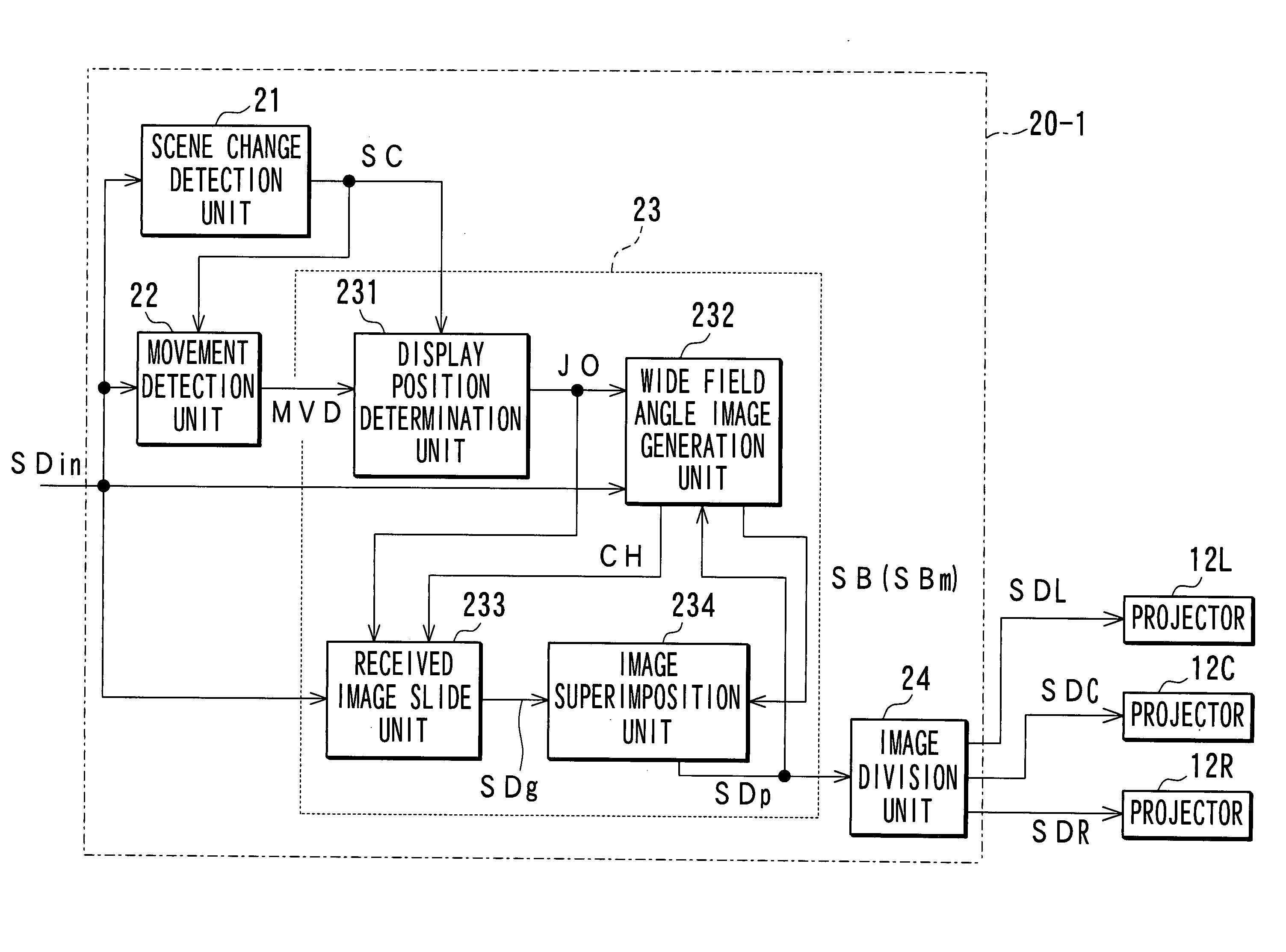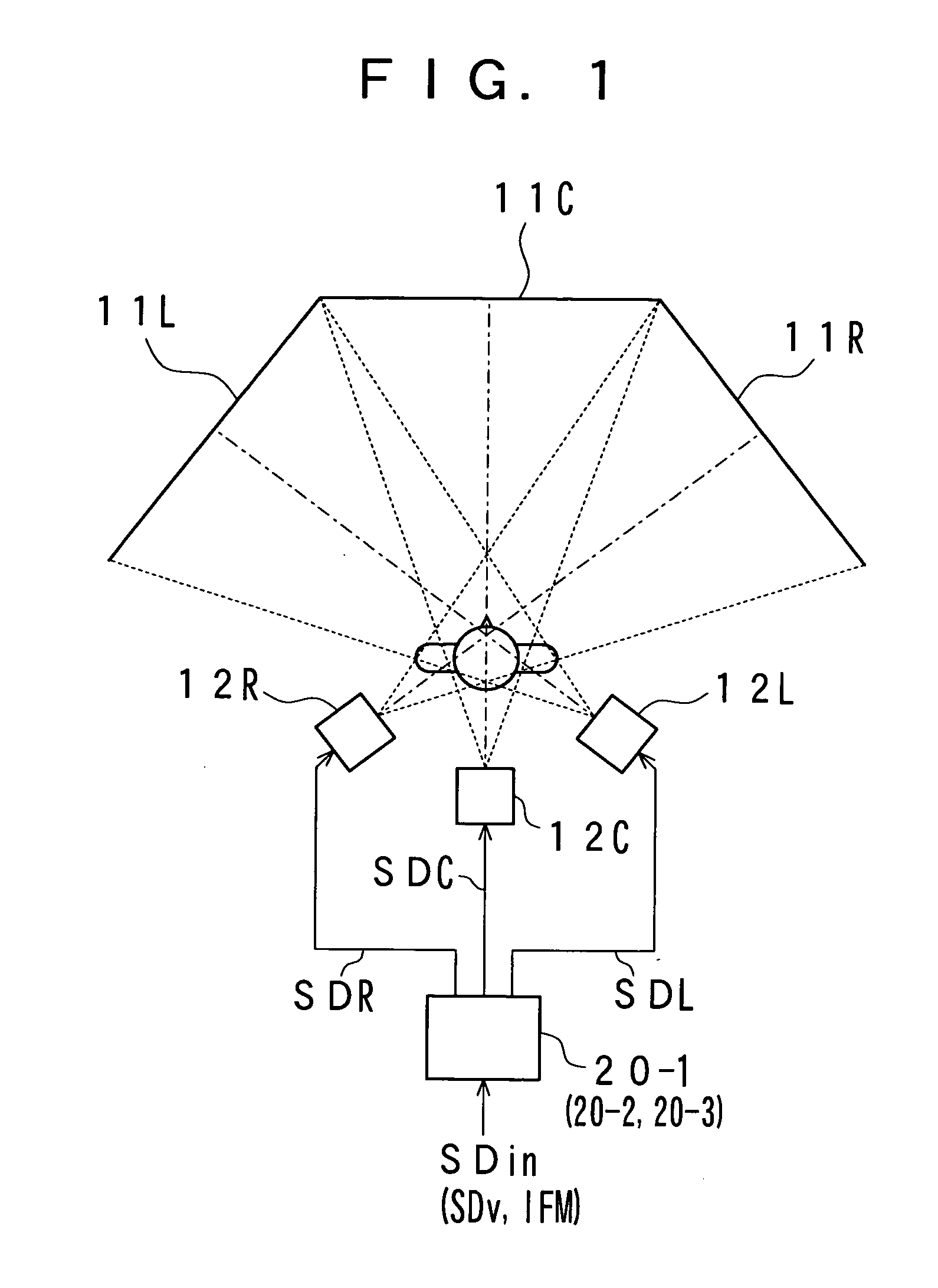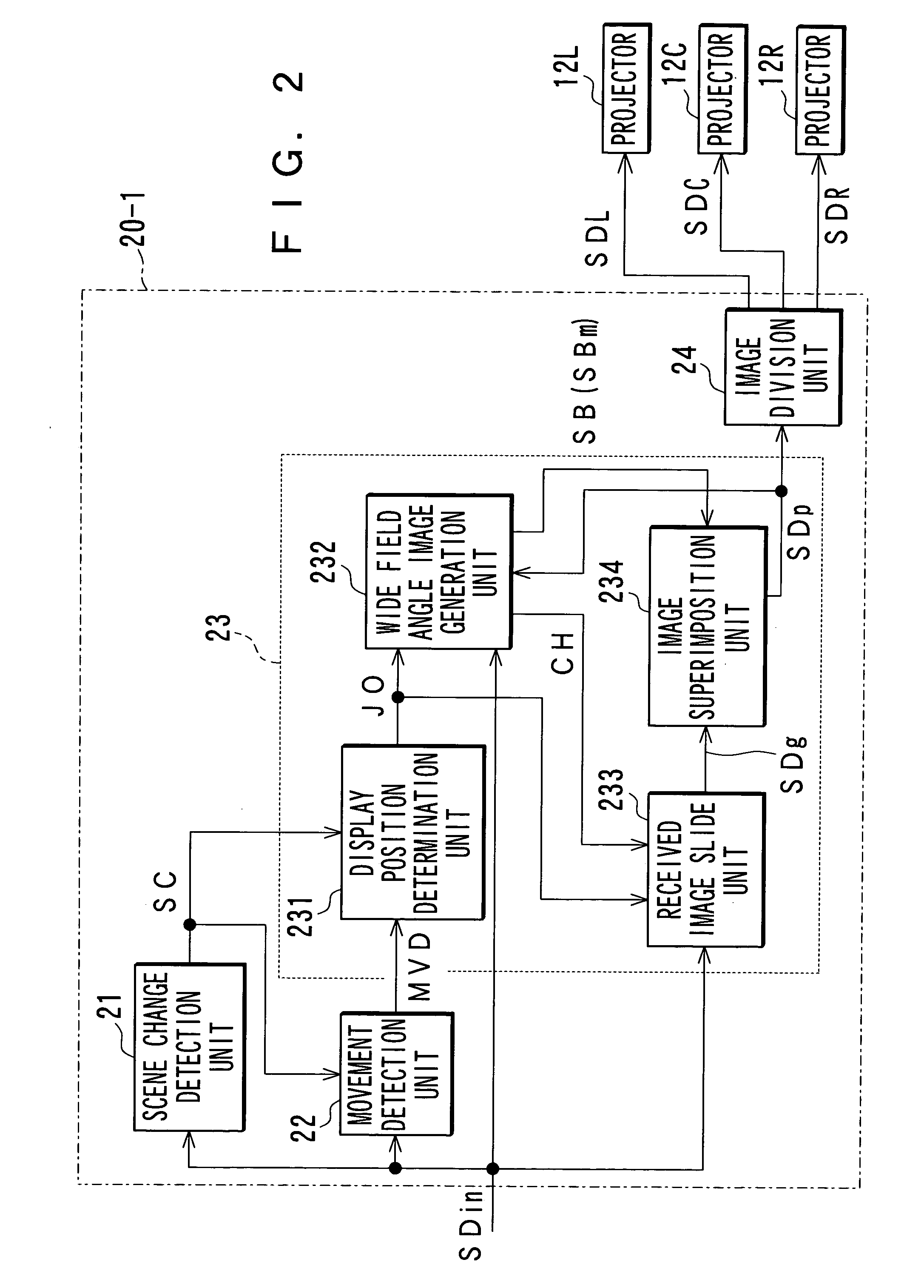Image processing apparatus, image processing method, and image processing program
a technology of image processing and image processing method, which is applied in the field of image processing apparatus, method and program, can solve problems such as the inability to display an image having realistic sensations
- Summary
- Abstract
- Description
- Claims
- Application Information
AI Technical Summary
Benefits of technology
Problems solved by technology
Method used
Image
Examples
first embodiment
Next, a first embodiment is described with reference to a case where the image processing apparatus 20-1 is used. The image processing apparatus 20-1 decides a continuous scene by detecting scene change based on an image signal SDin of each received image. It sequentially uses the received images contained in the continuous scene thus decided, to detect a movement in an entire screen, thereby setting a display position of each of the received images based on the movement in the images obtained by the movement detection. Furthermore, it superimposes the received images at these set display positions in reverse order of time, to generate a wider field angle image than the received images. Further, based on the movement in the received images, it superimposes each of the received images on the wide field angle image so that an image of, for example, a background portion of each of the received images in which the movement has been detected may match the wide field angle image, thereby ...
second embodiment
It is to be noted that when images are sequentially displayed in a fixed image frame, unless switching of scenes in a display image is known properly, contents of a broadcast program, a movie, etc. cannot readily be understood in some cases. Further, if scene switching is performed frequently, it is difficult to know relevance between the scenes. Furthermore, unless the previous scene has been watched, contents of the subsequent scene cannot be understood in some cases. Therefore, the following will describe a case where an image processing apparatus 20-2 is used to perform image display that has realistic sensations and is easy to understand, as a
This image processing apparatus 20-2 detects scene change based on an image signal SDin of a received image to determine whether the scene change has been made and, based on a determined result, it switches an image display position for each of the scenes. Further, when switching the image display position, it displays such scenes as to h...
third embodiment
An image display system for projecting a shot large space onto a two-dimensional plane of a fixed image frame is accompanied with unnaturalness due to a mismatch with a real space because such a system expresses spatiality of the space and a movement in it utilizing sensory illusions of human beings. For example, when the subject is moving, a viewer cannot keep recognizing it unless he or she moves his or her viewpoint in line with the movement of the subject in the real space. However, in a conventional image display system, the viewer can keep recognizing the subject only by fixing his or her viewpoint position in the fixed image frame while in fact moving his or her viewpoint by sensory illusions, thus being accompanied by unnaturalness. Further, a program or a movie is produced on the assumption that various images are displayed in the fixed image frame, so that image expression power is deteriorated, thus disabling more realistic image display. Further, this holds true not only...
PUM
 Login to View More
Login to View More Abstract
Description
Claims
Application Information
 Login to View More
Login to View More - R&D
- Intellectual Property
- Life Sciences
- Materials
- Tech Scout
- Unparalleled Data Quality
- Higher Quality Content
- 60% Fewer Hallucinations
Browse by: Latest US Patents, China's latest patents, Technical Efficacy Thesaurus, Application Domain, Technology Topic, Popular Technical Reports.
© 2025 PatSnap. All rights reserved.Legal|Privacy policy|Modern Slavery Act Transparency Statement|Sitemap|About US| Contact US: help@patsnap.com



